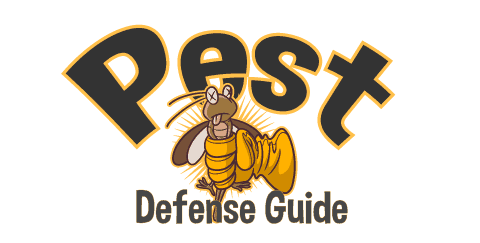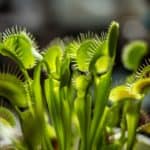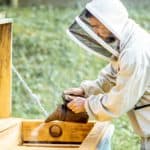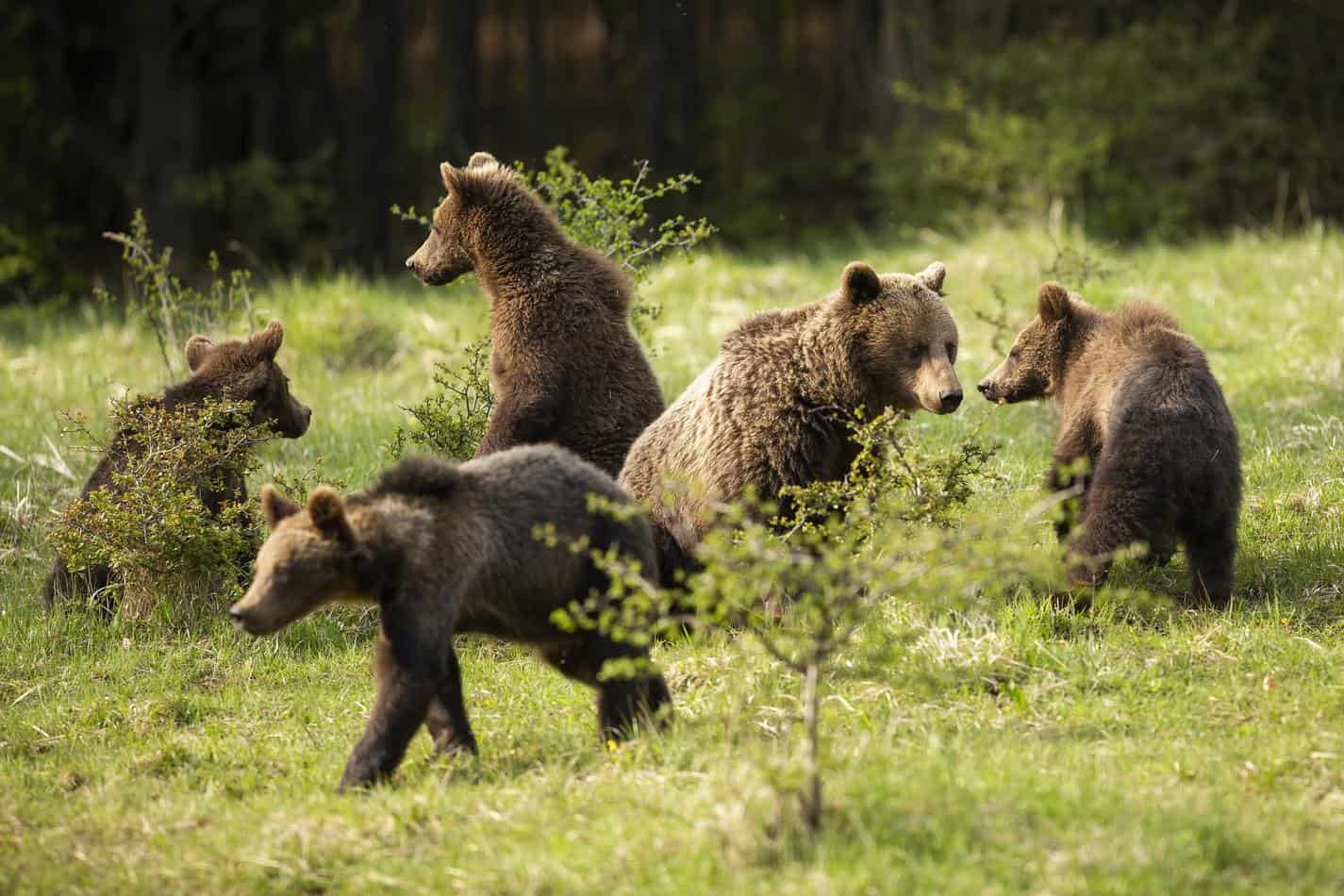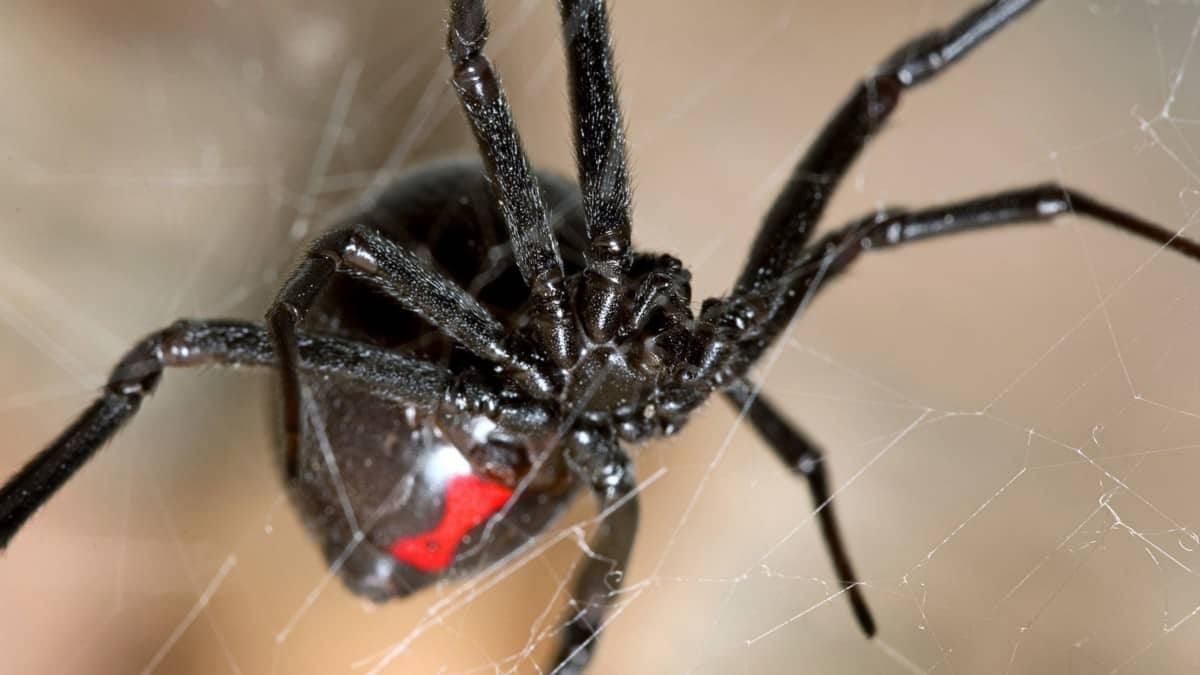If your own a garden or farm, you can be sure to attract lots of insects. Many of these are harmless, and some are actually beneficial. As a matter of fact, processes such as pollination and soil aeration are largely dependent on insects.
But some insects will invade your garden leaving untold damage in their wake. The unwelcome visitors will form our subject of discussion in this article. We will tell you the most common types of insects you are likely to encounter in your garden and how to get rid of them.
How do you Stop Insects From Destroying Your Farm?
There are various control methods you can use to drive insects away from your farm. The easiest that comes to mind is applying insecticides, but chemicals may end up contaminating your crops and killing other beneficial organisms in the process.
Favorable control methods may include introducing natural predators, handpicking, and using organic sprays such as neem oil, but methods may vary depending on the type of insect. Let’s examine the control methods you can use to eliminate pesky insects from your farm.
What Are the 15 Most Common Insects That Damage Gardens, and How Do You Keep Them Out?
1. Aphids
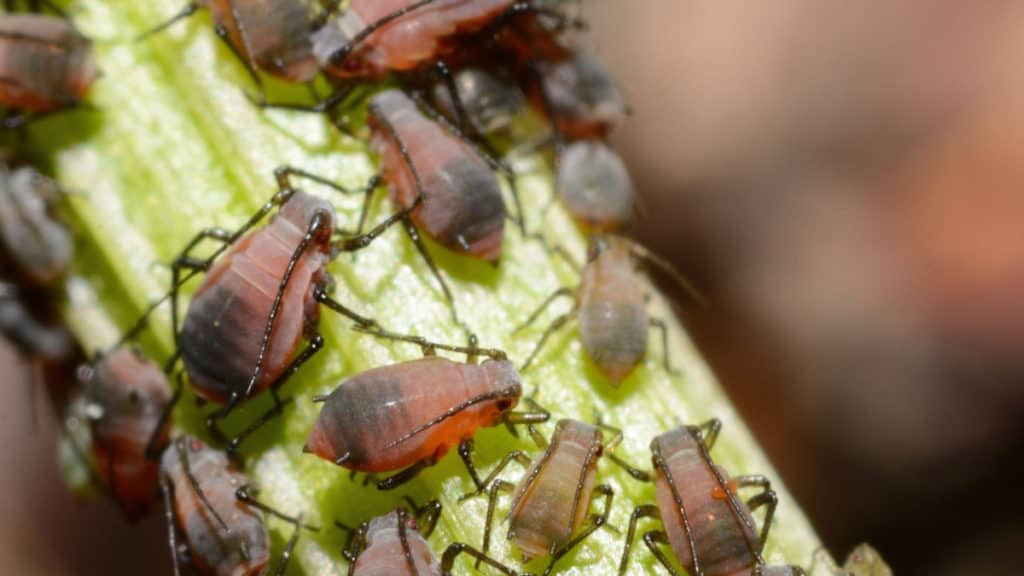
Aphids are small brownish or green pear-shaped insects with long antennae. They suck sap from leaves, tender shoots, and flower buds, making plants weak and retarded in growth. Aphids live in large colonies and can cause considerable damage if not checked. Luckily, you can spot their invasion by the honeydew they secrete on leaves. The following are some common solutions to an aphid infestation:
• Wash the leaves with a strong spray of water
• Use hot-pepper and garlic spray. These are good natural repellants
• Attract natural predators such as aphid midges, lady beetles, and lacewings into your farm by planting nectar-rich flowers or herbs
2. Caterpillars
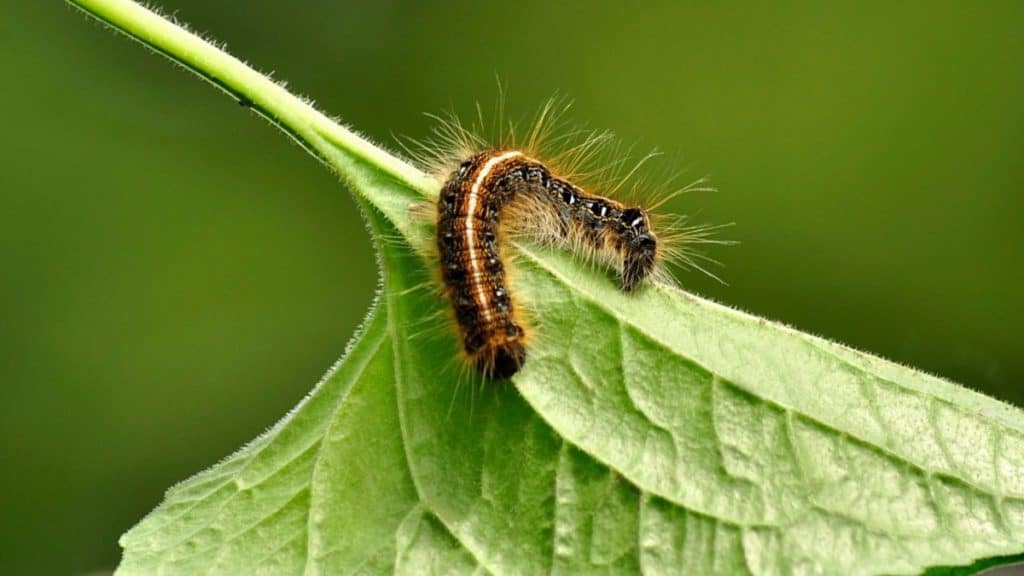
Caterpillars come in many types, including hornworms and cabbage worms. These are segmented larvae with six legs on the upper segments and fleshy false legs on their rear segments. These insects will chew on the leaves and burrow into fruits destroying plants or fruits. The best time to control caterpillars is when they are still young so as to break their lifecycle. Consider doing the following:
• If you have a small garden or farm, you can handpick them
• Spray your leaves with nematode spray in the evening. It will kill them off by infecting them with a bacterial disease
• If your plants are young, you can lay floating row covers as a preventive measure. It will keep the pests out while allowing water and sunlight to reach your plants
3. Spider Mites
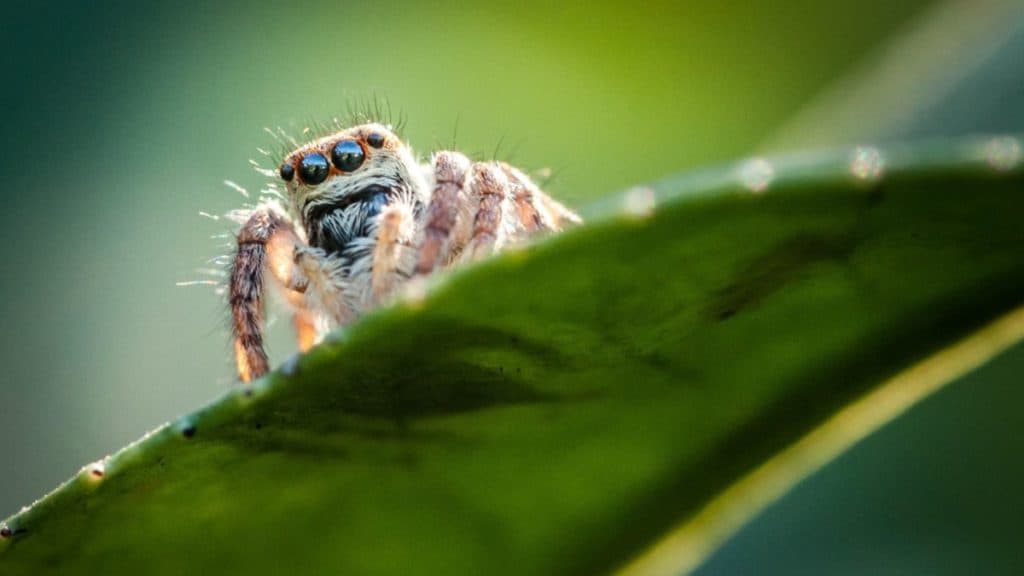
Although not insects, spider mites are very destructive pests. These are minute dot-sized shoot sucking arachnids, which are either red, yellow, light green, or brown. Due to their size, you might not be able to spot them easily but if you observe webbing on the leaves, know that they are around. Spider mites suck the juice out of the leaves, making them turn yellow or white. Here is how you to get rid of them:
• Use insecticidal soap plus botanical pyrethrins to kill them on contact
• Applying neem oil will kill the eggs and larvae and prevent a re-infestation
• Buy commercially reared mites and introduce them as natural predators in your farm or garden
• Watering your farm or garden regularly is a good preventative measure since spider mites prefer drier conditions
4. Grasshoppers
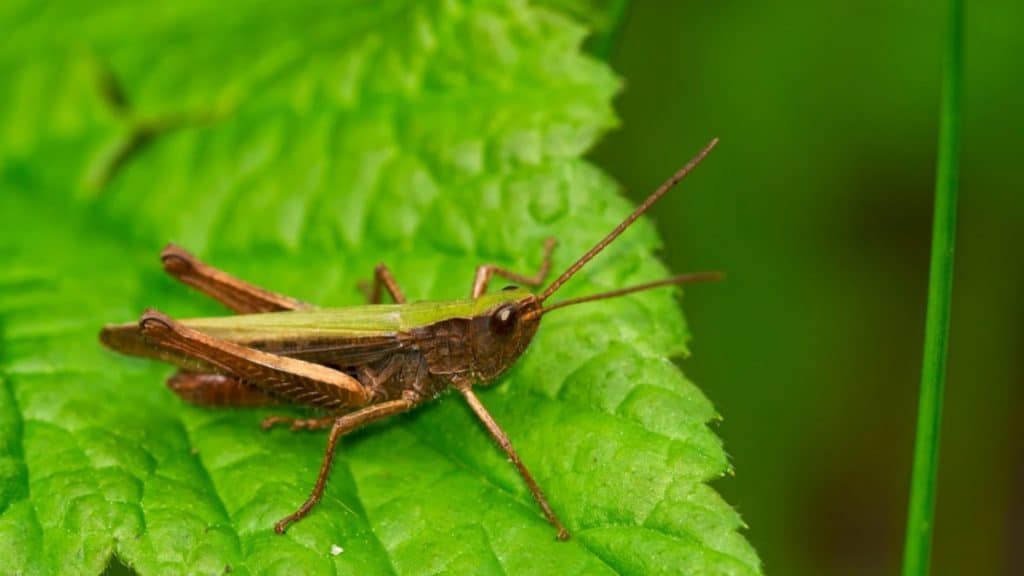
A grasshopper invasion is a nightmare for any farmer. These small brown or bright greenish migratory insects are always moving from areas with limited food to areas with plenty. This constant movement makes it almost impossible to control them. But you can try the following measures:
• If you have a small farm or garden, place a netting or floating cover to help reduce infestation
• Spray the pests with insect soap and pyrethrin to kill them
• Introduce natural predators by planting flowers on your farm. Parasitic flies and blister beetles will feed on eggs while yellow jackets, parasitic nematodes, and birds will eat the adults
• Eliminate weeds and plant debris to leave the hoppers unprotected, exposing them to predators
5. Cutworms
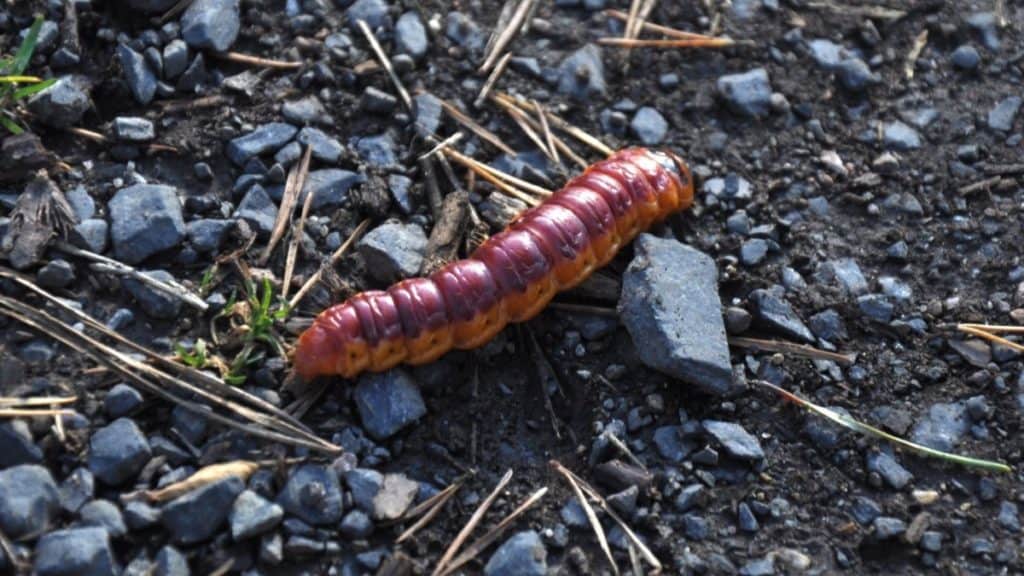
Cutworms are one-inch long segmented larvae that chew on stems at the ground level, causing your plants to fall over. You are unlikely to see them during the day since they are only active at night, but you might spot them hiding below trash, grass clumps, and plant debris. Eliminate cutworms using the following methods:
• Place cutworm collars on your transplants to prevent the cutworms from accessing the stems. The barrier should penetrate an inch down into the ground and protrude at least an inch and a half above the ground
• Introduce natural predators such as parasitic nematodes or toads in your farm to feast on the worms
• You can also handpick the cutworms that are curled below the soil surface
6. Leaf Miners
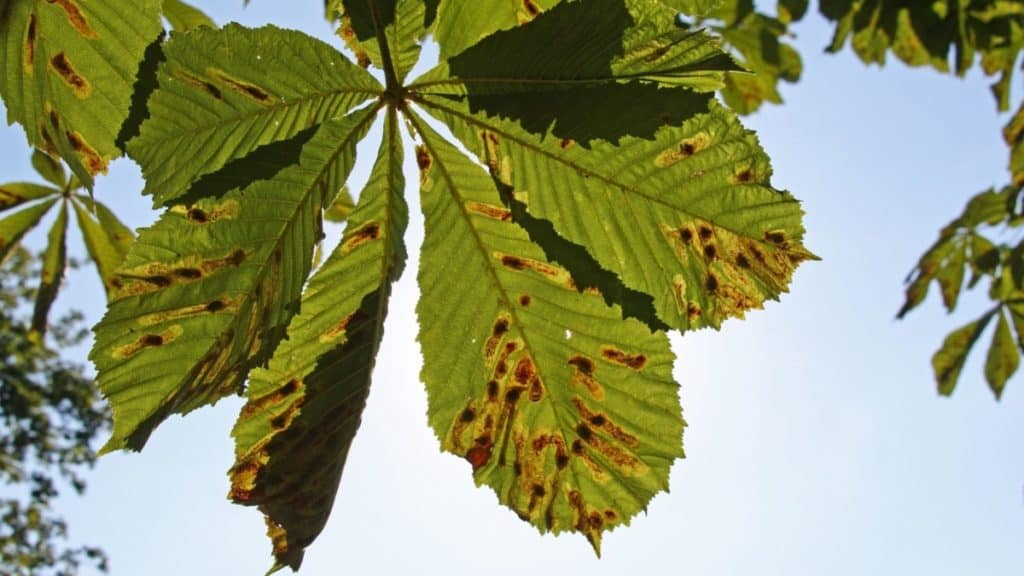
Leaf miners burrow into the leaf and feed on its tissue layers. Although they will rarely kill or damage your plants, they leave white patterns of excreta on the leaves, giving your plants an unpleasant appearance. They will attack your kales, spinach, peppers, tomatoes, and pumpkins, making them unmarketable. Here is how to deal with them:
• Spray your plants with neem oil. It will interfere with the pests’ life cycle by stopping them from flying, feeding, and mating
• Buy commercially bred parasitic wasps and introduce them as natural predators.
• If the infestation is minimal, you can handpick the affected leaves and cover the rest of the seedlings with floating row covers
7. Mealybugs
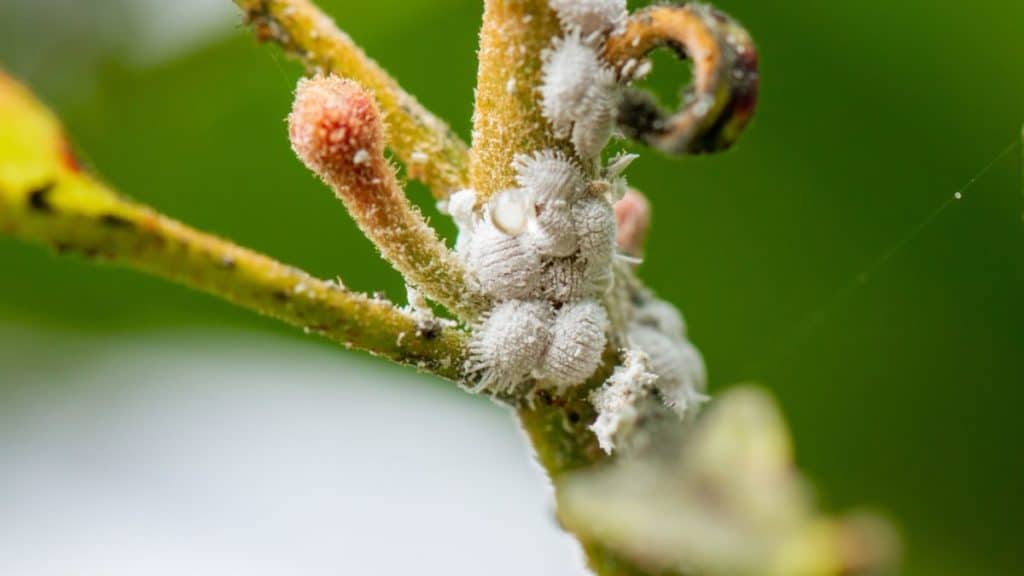
Female mealybugs are wingless and never leave the nymph stage, while the males have two wings and only live to reproduce. Know that you have an infestation if you spot the white waxy secretion covering that they use to protect their eggs and nymphs. The pests suck plant juices leaving the leaves to wither and fall. Unfortunately, their waxy covering makes chemical products ineffective, but you can try the following solutions:
• Introduce natural predators such as parasitic wasps, spiders, and lady beetles.
• Apply insecticidal soaps, neem oil, or horticultural oil directly in places with less wax. It might work against younger nymphs.
8. Whiteflies
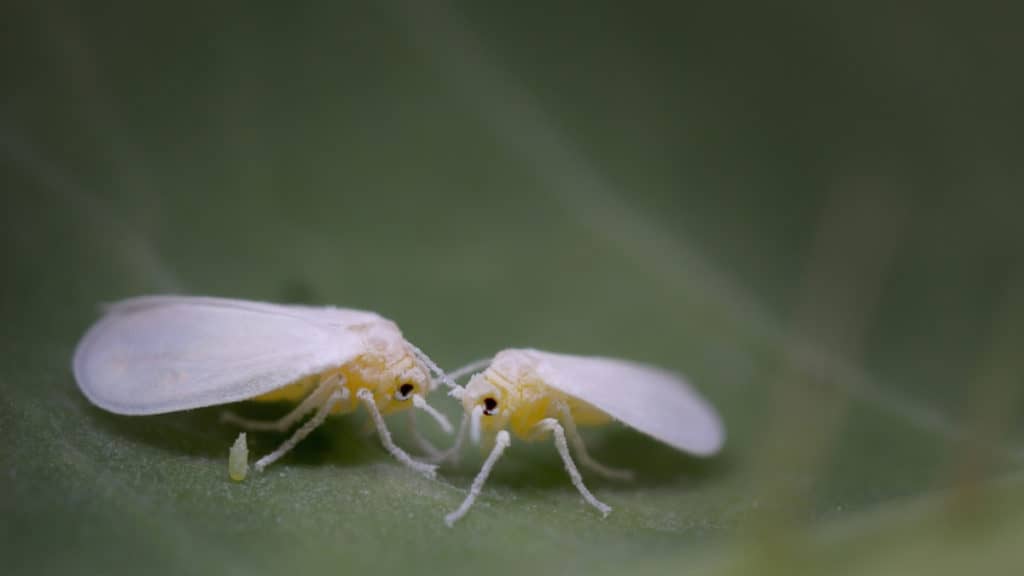
Whiteflies are tiny white sup-sucking insects that are active all year round. They feed on edible and ornamental plants leaving behind a honeydew residue that later turns into black sooty mold. Apart from compromising your plants’ vigor, they also leave them vulnerable to viral diseases. Using chemical pesticides may not be effective since whiteflies soon develop tolerance. You can eliminate them by taking any of the following measures:
• Being vigilant and inspecting your plants for signs of an infestation. Make sure to check the underside of leaves because it’s their favorite hiding spot
• Using an aluminum reflective mulch to blind them, making it hard for them to find their target
• Spraying the affected plants with water from a hose
• Introducing natural predators such as female beetles, spiders, and parasitic wasps to feed on the whiteflies
9. Japanese Beetle
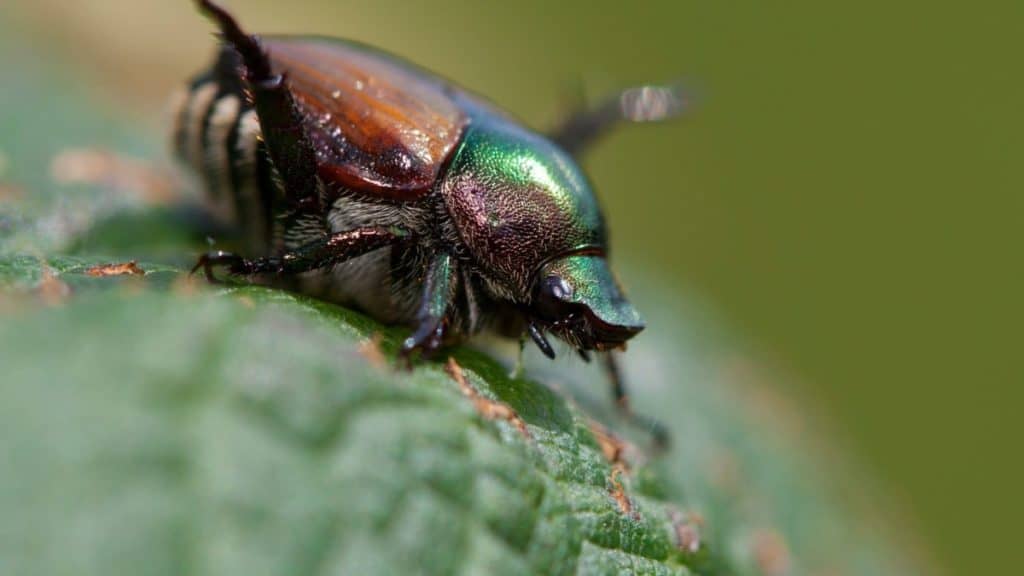
The Japanese beetle is a beautiful insect with a bluish greenish body and copper or bronze-colored wings. Sadly, it is one of the worst pests you could ever encounter. These beetles travel in large swarms and can decimate your field in the blink of an eye. It takes them just 15 minutes to strip an entire peach tree bare. They feed on grasses, vegetables, ornamental plants, and fruit trees. You can keep them out by:
• Spaying your plants with neem oil
• Introducing beneficial nematodes when the beetle is in the larvae stage
• Using a bag trap. Put a food or sex attractant inside the bag and strap it on a pole away from your home
• Planting nectar or pollen-producing plants to attract natural predators such as parasitic wasps
10. Flea Beetle
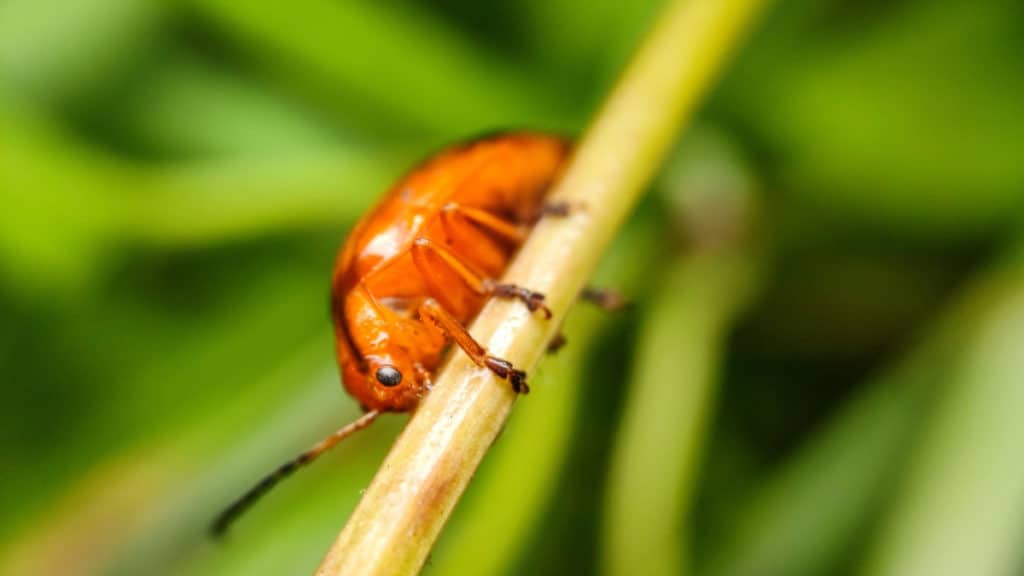
The flea beetle is quite tiny at less than a quarter-inch long. It has a dark metallic color and strong hind legs that enable it to jump long distances. At the larvae stage, it feeds on roots but switches to leaf crops as an adult, with summer crops such as eggplants, tomatoes, and cabbages being its favorite. Consider the following methods of keeping these away from your farm:
• Lay row covers over your seedlings to nip the problem in the bud
• Introduce beneficial nematodes
• Spray your plants with garlic spray or kaolin spray
• Spray neem oil or insecticidal soap on your plants
11. Mexican Bean Beetle
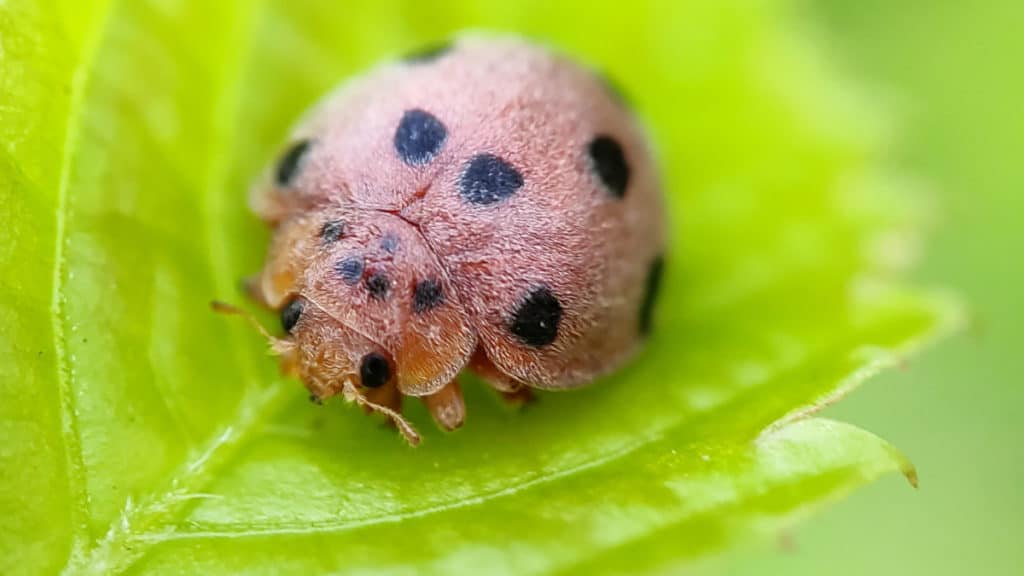
This is a quarter-inch long oval insect with a yellow-brown body and 16 black spots on its wing covers. The beetle has a liking for bean plants, and you will usually find it on lima beans, snap beans, soybeans, and cowpeas. It chews on leaves, leaving a trail of lace holes in its wake. Do the following to eliminate the Mexican bean beetle:
• Lay floating row covers over your plants
• Spray your plants with insecticidal soap or neem oil
• Plant marigolds and rosemary since they are effective deterrents
• plant the soya bean trap crop, which will attract and hold the Mexican bean beetle
12. Cabbage Loppers
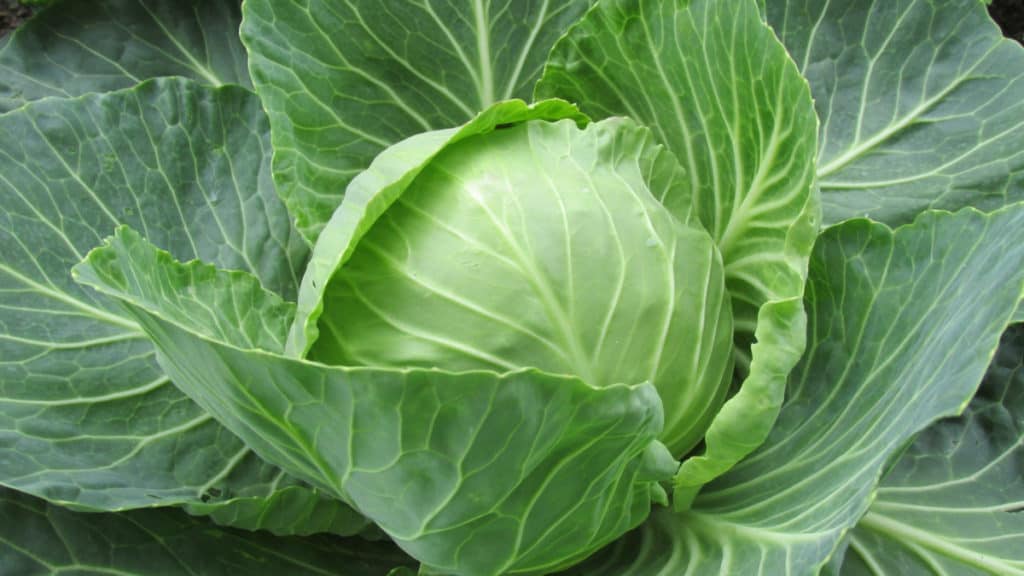
The cabbage lopper is a light green insect that gets its name from how it pulls its body to form a loop to propel itself. It specializes in cole crops such as kale, cauliflower, cabbage, and broccoli. Apart from eating the leaves, it produces droppings that contaminate the plants. You can get rid of the pest by:
• Attracting natural predators such as spiders, lady beetles, and wasps to attack the larvae and eggs
• Laying floating row covers to block their entrance
• Hand-picking the insects if they are few
• Sprinkling diatomaceous earth around your plants
13. Colorado Potato Beetle
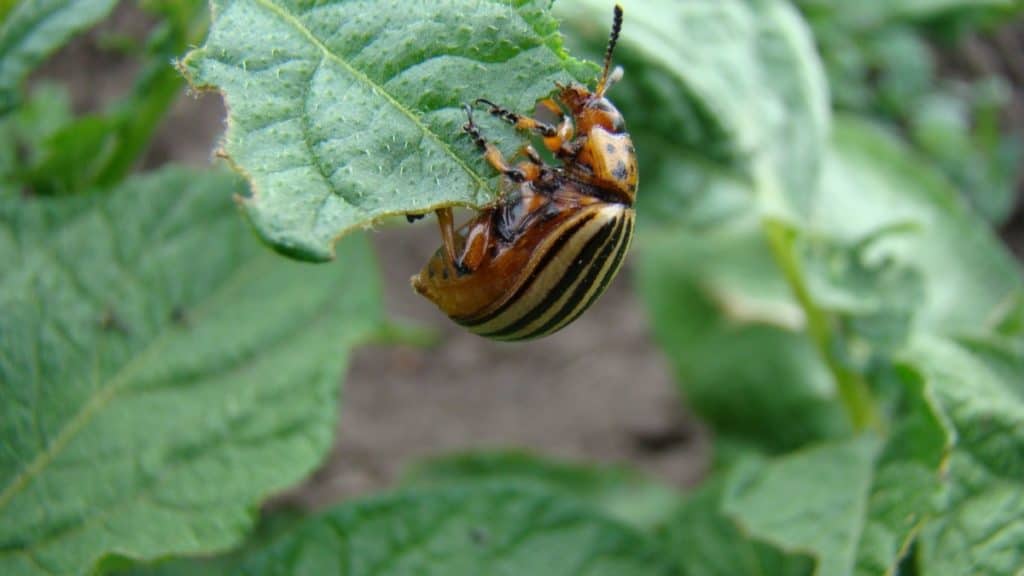
The Colorado potato beetle is a yellow-orange insect with ten black stripes running down its wing covers. You can find it on your eggplant, potatoes, cherry tomatoes, and other plants. What is worrying is that the Colorado Potato Beetle reproduces rapidly, laying close to 500 eggs at a time thrice in a year. Do the following to exterminate it.
• Lay floating row covers over your plants to prevent an infestation
• If you’re facing a limited infestation, you can handpick them
• Plant pollen or nectar-producing plants to attract beneficial birds and install birdhouses and birdbaths to attract predator birds
• Spray your crops with neem oil
14. White Grubs
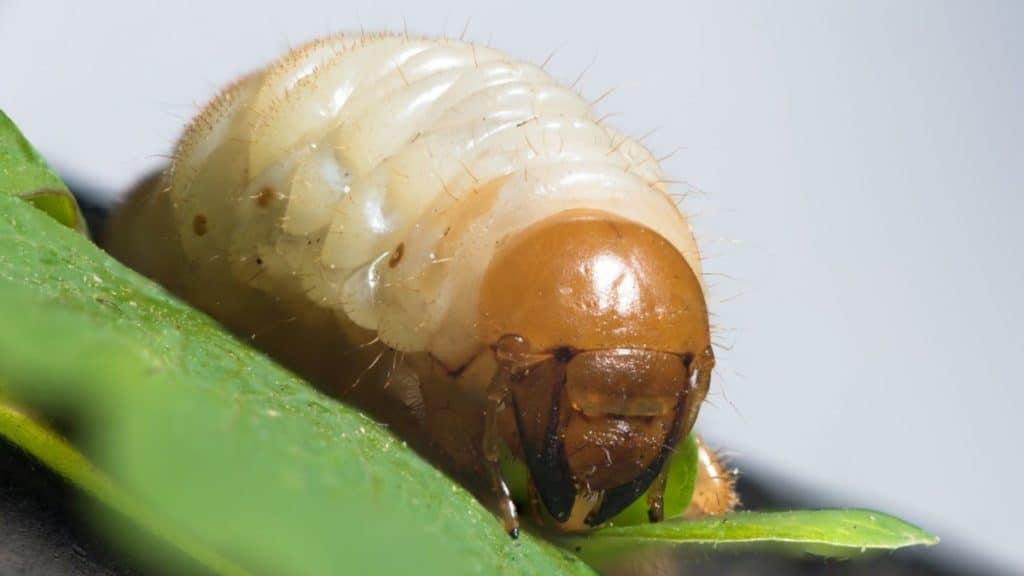
White grubs are the larvae stage of June bugs, billbugs, chafers, and many other insects. They are C shaped white-colored insects that live just below the soil surface. Although they prefer grass, they will also eat vegetable plants and weeds. You can tell they’re present by the sign of dead spots on your lawn. Control methods include:
• Spraying your lawn with neem oil
• Introducing beneficial nematodes into the soil
• Attracting natural predators such as parasitic wasps
15. Earwigs
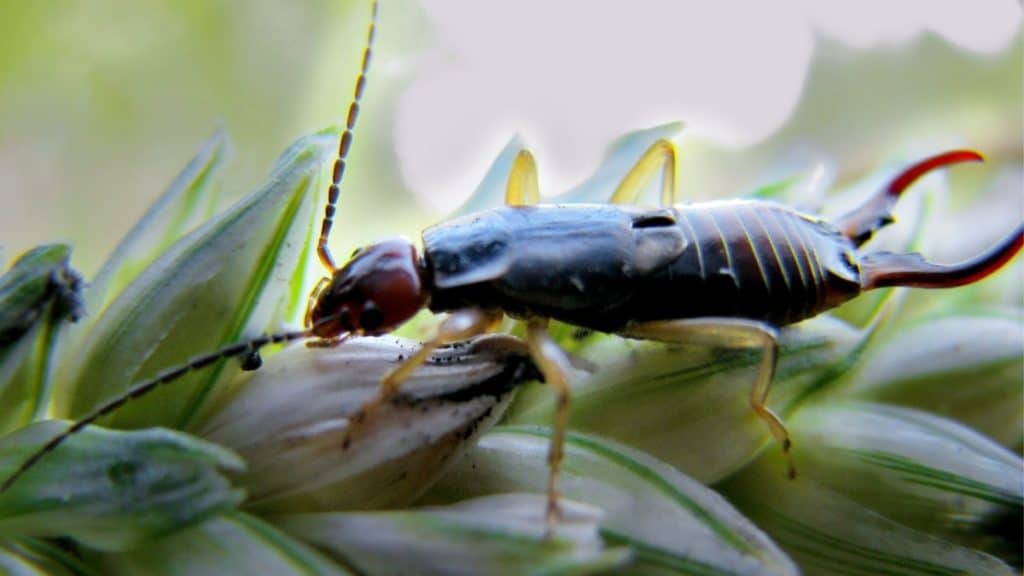
Adult earwigs are grayish-brown or light brown and have a small white dot on their front wings. These can destroy an entire field overnight, so you are unlikely to detect their presence in good time. But if you’re lucky, you can try the following control measures:
• Use organic insecticides
• Introduce natural predators such as parasitic wasps
• If you had experienced a previous invasion or are worried about an incoming one, introduce beneficial nematodes as a preventative measure
Final Thoughts
An insect infestation can easily decimate your entire farm leaving you to count your losses. It is better to prevent an invasion than to deal with one, so ensure you eliminate plant debris, weeds, or grass clumps that can act as breeding places for insects.
But in case you find yourself with an infestation on your hands, you can use any of the above measures or a combination of them to get rid of the pests. If you have to use insecticides, make sure to read the labels carefully and follow the application procedure to the letter.
